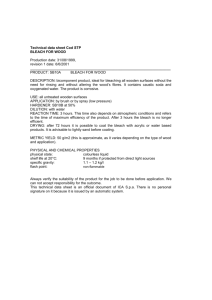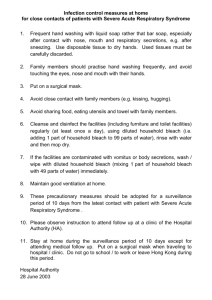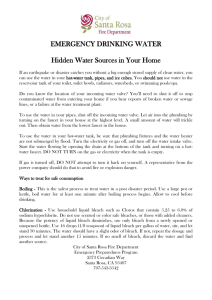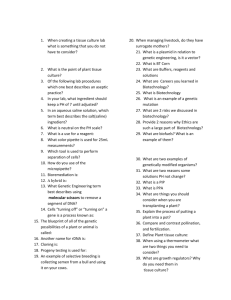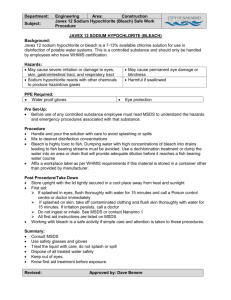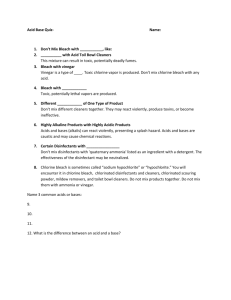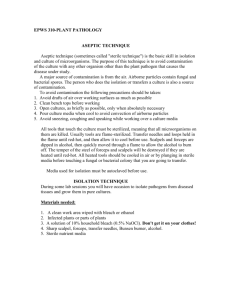Recommended guidelines for pouring biomedical liquid waste down the sanitary...
advertisement
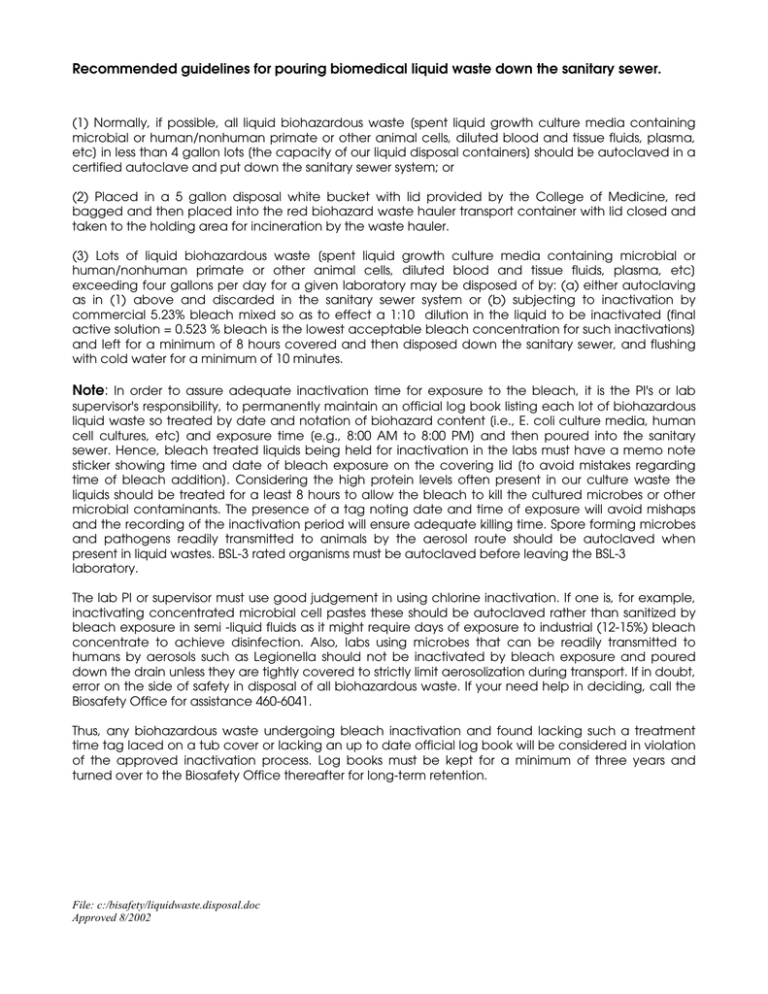
Recommended guidelines for pouring biomedical liquid waste down the sanitary sewer. (1) Normally, if possible, all liquid biohazardous waste [spent liquid growth culture media containing microbial or human/nonhuman primate or other animal cells, diluted blood and tissue fluids, plasma, etc] in less than 4 gallon lots [the capacity of our liquid disposal containers] should be autoclaved in a certified autoclave and put down the sanitary sewer system; or (2) Placed in a 5 gallon disposal white bucket with lid provided by the College of Medicine, red bagged and then placed into the red biohazard waste hauler transport container with lid closed and taken to the holding area for incineration by the waste hauler. (3) Lots of liquid biohazardous waste [spent liquid growth culture media containing microbial or human/nonhuman primate or other animal cells, diluted blood and tissue fluids, plasma, etc] exceeding four gallons per day for a given laboratory may be disposed of by: (a) either autoclaving as in (1) above and discarded in the sanitary sewer system or (b) subjecting to inactivation by commercial 5.23% bleach mixed so as to effect a 1:10 dilution in the liquid to be inactivated [final active solution = 0.523 % bleach is the lowest acceptable bleach concentration for such inactivations] and left for a minimum of 8 hours covered and then disposed down the sanitary sewer, and flushing with cold water for a minimum of 10 minutes. Note: In order to assure adequate inactivation time for exposure to the bleach, it is the PI's or lab supervisor's responsibility, to permanently maintain an official log book listing each lot of biohazardous liquid waste so treated by date and notation of biohazard content [i.e., E. coli culture media, human cell cultures, etc] and exposure time [e.g., 8:00 AM to 8:00 PM] and then poured into the sanitary sewer. Hence, bleach treated liquids being held for inactivation in the labs must have a memo note sticker showing time and date of bleach exposure on the covering lid [to avoid mistakes regarding time of bleach addition]. Considering the high protein levels often present in our culture waste the liquids should be treated for a least 8 hours to allow the bleach to kill the cultured microbes or other microbial contaminants. The presence of a tag noting date and time of exposure will avoid mishaps and the recording of the inactivation period will ensure adequate killing time. Spore forming microbes and pathogens readily transmitted to animals by the aerosol route should be autoclaved when present in liquid wastes. BSL-3 rated organisms must be autoclaved before leaving the BSL-3 laboratory. The lab PI or supervisor must use good judgement in using chlorine inactivation. If one is, for example, inactivating concentrated microbial cell pastes these should be autoclaved rather than sanitized by bleach exposure in semi -liquid fluids as it might require days of exposure to industrial (12-15%) bleach concentrate to achieve disinfection. Also, labs using microbes that can be readily transmitted to humans by aerosols such as Legionella should not be inactivated by bleach exposure and poured down the drain unless they are tightly covered to strictly limit aerosolization during transport. If in doubt, error on the side of safety in disposal of all biohazardous waste. If your need help in deciding, call the Biosafety Office for assistance 460-6041. Thus, any biohazardous waste undergoing bleach inactivation and found lacking such a treatment time tag laced on a tub cover or lacking an up to date official log book will be considered in violation of the approved inactivation process. Log books must be kept for a minimum of three years and turned over to the Biosafety Office thereafter for long-term retention. File: c:/bisafety/liquidwaste.disposal.doc Approved 8/2002
